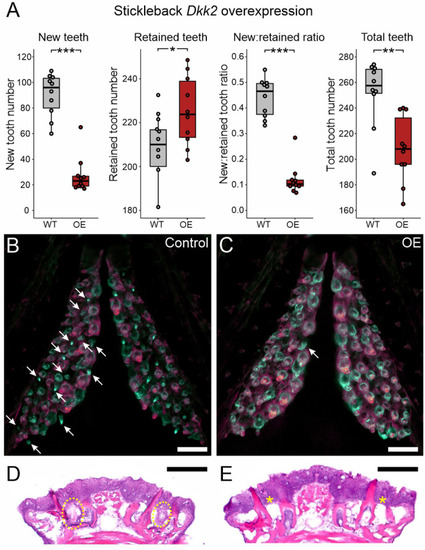
Dkk2 overexpression diminishes new tooth initiation in stickleback. All P-values are derived from Wilcoxon Rank-Sum tests, adjusted for multiple hypothesis testing. (A) Significant decreases in the number of new teeth (P=0.00049), the new:retained ratio (P=4.3e-5) and total teeth (P=0.0048), and an increase in retained teeth (P=0.037) were observed (n=10 control, 10 OE fish). (B,C) Overlay images of stickleback ventral tooth plates showing Alizarin Red and calcein signal in control (B) and OE (C) fish. Note the near-complete absence of unankylosed new teeth in the OE fish (white arrow in C) compared with the WT fish (white arrows in B). The right side is unlabeled. (D,E) H&E staining on transverse sections of tooth fields reveals no tooth germs of any stage in Dkk2 OE fish (n=7/7), suggesting that this treatment does not cause tooth germs to arrest (yellow ovals in D show tooth germs, asterisks in E sit above the positions normally populated by tooth germs). Boxes represent the 25th-75th percentiles, the median is shown as a black bar, and whiskers represent those data within 1.5× the interquartile range above and below the 75th and 25th percentiles, respectively. *P<0.05, **P<0.01, ***P<0.001. Scale bars: 100 μm.
|